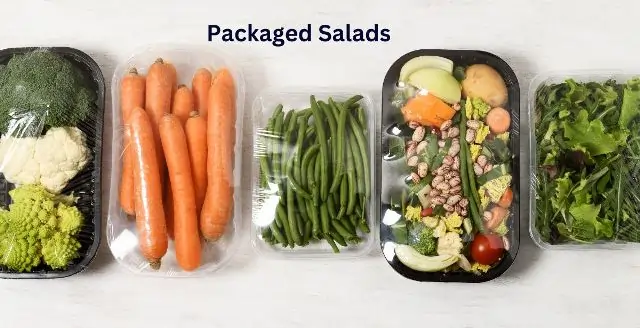Are Packaged Salads Safe To Eat
Packaged salads have gained immense popularity in recent years due to their convenience and availability in grocery stores. They are marketed as a healthy and easy meal option for people on the go. With pre-washed greens and a variety of toppings, packaged salads seem like a quick and nutritious option. However, there are concerns regarding their nutritional value, freshness, and safety. In this blog post, we will explore the question of whether Are Packaged Salads Healthy and provide readers with 9 vital facts they must know.
What Are Packaged Salads?
Packaged salads refer to pre-prepared salads that are sold in supermarkets and convenience stores. These salads typically come in plastic containers and are ready to eat straight out of the package.
There are various types of packaged salads available, including:
- Green salads – made primarily of leafy greens such as lettuce, spinach, and kale.
- Pasta salads – typically contain cooked pasta, vegetables, and dressing.
- Fruit salads – made with a variety of fresh fruits, often with a sweet dressing.
- Grain salads – often made with quinoa, bulgur, or rice, mixed with vegetables and dressing.
- Protein salads – these contain a source of protein such as chicken, tuna, or egg, mixed with vegetables and dressing.
While convenient, it is important to consider the health benefits of these salads and whether they are a healthy option.
Nutritional Value of Packaged Salads
- Packaged salads generally contain a variety of leafy greens, vegetables, and sometimes protein or grains.
- They can vary in calories but typically range from 100 to 300 calories per serving.
- They can be high in vitamins and minerals, particularly if they contain dark, leafy greens like spinach or kale.
- Many packaged salads are also high in sodium, which can be a concern for those with high blood pressure or heart disease.
- The dressing included with packaged salads can significantly increase the calorie and fat content.
- Some packaged salads may also contain added sugars or preservatives.
- It’s important to read nutrition labels and ingredient lists carefully to choose the healthiest options.
The Hidden Dangers of Packaged Salads
Some potential health risks associated with packaged salads include the risk of contamination from harmful bacteria such as E. coli or salmonella, as well as the presence of pesticides and other chemicals used in the production and packaging process. Additionally, some packaged salads may contain high levels of sodium, sugar, and unhealthy fats, which can contribute to a range of health issues including obesity, high blood pressure, and heart disease. It is important to carefully read labels and properly wash and prepare packaged salads to minimize these risks
Factors that can affect the safety of packaged salads include:
- Contamination during harvesting, processing, or packaging
- Exposure to harmful bacteria during transportation or storage
- Insufficient cleaning or washing before packaging
- Lack of proper refrigeration during storage and transportation
- Cross-contamination during food preparation or handling
- Use of outdated or contaminated ingredients in the salad or dressing
- Use of preservatives or additives that can be harmful in excessive amounts
It’s important to be aware of these factors and take necessary precautions, such as thoroughly washing fresh produce and properly storing and preparing salads.
Understanding Food Labels on Packaged Salads
Understanding Packaged Salad Labels: What to Look For
When it comes to packaged salads, it’s important to read and understand the information on the label to make informed decisions about what you’re consuming. Here are some key things to look for:
- Serving size: This tells you the amount of salad that constitutes one serving.
- Calories: This indicates the number of calories in one serving of the salad.
- Fat: This tells you the total amount of fat in one serving, including saturated and trans fats.
- Sodium: This indicates the amount of salt in one serving.
- Carbohydrates: This tells you the total amount of carbohydrates in one serving, including fiber and sugar.
- Protein: This indicates the amount of protein in one serving.
It’s also important to pay attention to any allergens listed on the label and to check the expiration date to ensure the salad is still fresh. By reading and understanding the information on the label, you can make informed choices about the packaged salads you consume.
Label Essentials: What to Look for in Packaged Salads
When reading the label of a packaged salad, there are a few important things to look for to ensure that it is safe and healthy:
- Ingredients: Check the list of ingredients to make sure that there are no harmful additives or preservatives.
- Expiration date: Always check the expiration date to ensure that the salad is fresh and safe to eat.
- Nutritional information: Look at the nutritional information to see the calorie, fat, and sugar content. Choose salads that are low in calories and high in fiber, vitamins, and minerals.
- Allergen information: If you have any food allergies, make sure to check the label for allergen information.
- Washing instructions: Check the label for washing instructions, as some salads may need to be rinsed before eating to remove any bacteria or germs.
Storing and Preparing Packaged Salads: Best Practices
Safe Storage and Handling Tips for Packaged Salads
Here are some tips for safe storage and handling of packaged salads:
- Check the expiration date and sell-by date on the package before purchasing.
- Store the packaged salad in the refrigerator immediately after purchase.
- Keep the packaged salad away from raw meat, poultry, and seafood in the refrigerator to avoid cross-contamination.
- Wash your hands with soap and water before handling the packaged salad and use clean utensils.
- Wash the salad thoroughly with running water and dry with a paper towel before consumption.
- Avoid keeping the packaged salad at room temperature for too long.
- Dispose of any leftover packaged salad after 2-3 days.
By following these tips, you can reduce the risk of foodborne illnesses associated with packaged salads.
Recommended Cooking Methods for Packaged Salads
As packaged salads are typically consumed raw, they do not require cooking. However, if you prefer cooked salads or want to reduce any potential risk of foodborne illness, you can consider cooking the components of your salad. Here are some recommended cooking methods for different ingredients in packaged salads:
Grilled chicken or beef:
For grilled chicken or beef, the ingredients typically include:
- Chicken breasts or beef steak
- Olive oil or vegetable oil
- Salt and pepper (to taste)
- Marinade (optional, can include ingredients like lemon juice, soy sauce, garlic, honey, etc.)
Here are some common cooking methods for grilled chicken or beef:
- Grilling: This involves cooking the meat on a grill over direct heat. It can be done using gas, charcoal, or electric grills.
- Broiling: This method involves cooking the meat under a broiler in the oven. The heat source is above the meat, which helps to create a browned, crispy exterior.
- Pan-searing: This involves cooking the meat in a hot skillet on the stove. It’s a quick and easy way to cook small cuts of meat.
- Sous-vide: This method involves cooking the meat in a vacuum-sealed bag in a water bath at a precise temperature. It’s a popular method for cooking meat to the perfect level of doneness.
Roasted vegetable
Here are some possible ingredients for roasted vegetables:
- Assorted vegetables, such as broccoli, cauliflower, carrots, bell peppers, zucchini, eggplant, etc.
- Olive oil
- Salt
- Pepper
- Garlic powder
- Herbs, such as thyme, rosemary, or oregano (optional)
Here are some common methods for roasting vegetables:
- Oven roasting: Preheat your oven to 400°F (205°C), toss your vegetables in oil and seasonings, spread them out in a single layer on a baking sheet, and roast for 20-30 minutes until tender and lightly browned.
- Grilling: Preheat your grill to medium-high heat, toss your vegetables in oil and seasonings, place them on a grill basket or skewers, and grill for 10-15 minutes until charred and tender.
- Pan-roasting: Heat a heavy-bottomed skillet over medium-high heat, toss your vegetables in oil and seasonings, and add them to the hot pan. Cook for 10-15 minutes, stirring occasionally, until tender and caramelized.
- Air frying: Preheat your air fryer to 400°F (205°C), toss your vegetables in oil and seasonings, and air fry for 10-15 minutes until crispy and tender.
Note: Cooking times and methods may vary depending on the type and size of the vegetables being roasted.
Sauteed shrimp
Ingredients for sautéed shrimp:
- 1 pound of raw shrimp, peeled and deveined
- 2 tablespoons of butter or olive oil
- 3 cloves of garlic, minced
- 1/4 teaspoon of red pepper flakes (optional)
- Salt and pepper, to taste
- 2 tablespoons of freshly squeezed lemon juice
- 2 tablespoons of chopped parsley (optional)
Here are some simple steps for sautéing shrimp:
- Heat a pan on medium-high heat with some oil or butter.
- Add minced garlic and sauté for 30 seconds.
- Add the shrimp to the pan and season with salt and pepper.
- Cook for about 2-3 minutes per side, or until the shrimp turns pink and is fully cooked.
- Remove from heat and serve hot with your desired sides or garnishes.
Alternatives to Packaged Salads
Healthy alternatives to packaged salads
Here are some suggestions for alternative healthy options to packaged salads:
- Make your own salad using fresh ingredients such as leafy greens, vegetables, and lean proteins like grilled chicken or tofu.
- Try using whole grains as a base for your salad, such as quinoa or brown rice.
- Incorporate roasted or grilled vegetables into your salads for added flavor and nutrition.
- Experiment with different dressings made from healthy ingredients like olive oil, vinegar, and herbs.
- Consider other healthy meal options, such as soups, stir-fries, or grain bowls, which can also be made with fresh ingredients and offer a variety of flavors and textures.
Benefits of Homemade Salads
Making your salads at home has numerous benefits, including:
- Control over ingredients: When making salads at home, you have complete control over the ingredients you use, allowing you to customize your meals according to your taste and preferences. This also means you can use high-quality ingredients, such as fresh greens, vegetables, and proteins, which can provide a variety of health benefits, such as vitamins, minerals, and antioxidants. Additionally, making salads at home can be more cost-effective than purchasing pre-packaged options from the store.
- Cost savings: Making salads at home can be a cost-effective option as compared to buying pre-packaged salads, especially if you buy ingredients in bulk or when they are in season. You can also customize the ingredients based on your budget and preferences.
- Customization: Making salads at home allows for complete customization according to personal taste and dietary preferences. You can add or omit ingredients as per your liking, such as incorporating more protein or vegetables. This way, you can create a salad that is not only healthy but also tailored to your individual needs.
- Reduced waste: Making your own salads at home can also lead to reduced waste. When you buy pre-packaged salads, you may end up throwing away excess packaging or unused ingredients. However, when making your own salad, you can control the portion sizes and use up all the ingredients, resulting in less waste.
- Increased satisfaction: Making your own salads at home can lead to increased satisfaction as you have the ability to customize them to your liking. You can add your favorite ingredients and adjust the flavors and textures to your preference. This can lead to a more enjoyable and satisfying meal experience.
Our picks on Best Packaged Salads
Mini Craft Salads
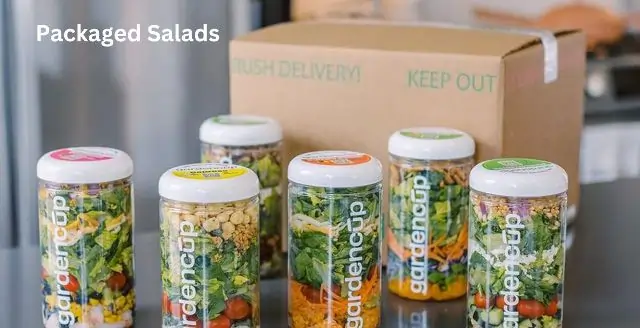
Fresh-Prepared Mini Craft Salads (12-Pack) by Gardencup are a variety pack of 12 individual, ready-to-eat fresh superfood salads. Each salad is conveniently packed in a grab-and-go cup and is cold-shipped fresh in airtight containers to ensure maximum freshness and flavor. Perfect for those who want a healthy, delicious, and convenient meal option on the go.
Fresh Brand Cobb Salad
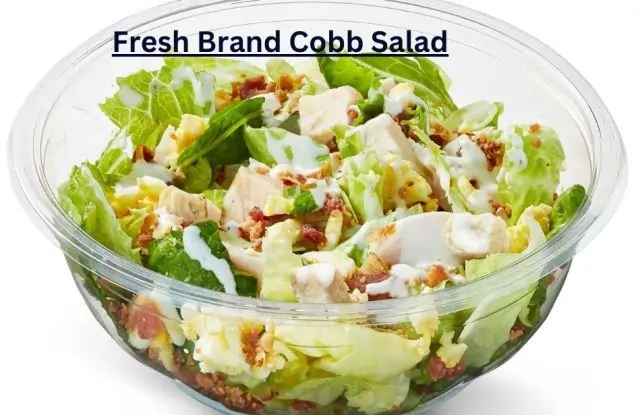
The Fresh Brand Cobb Salad with Chicken & Bacon is a tasty and convenient option for a quick and easy meal. Weighing in at 6.4 ounces, this salad is packed with fresh greens, tender grilled chicken, crispy bacon, juicy cherry tomatoes, creamy avocado, and tangy blue cheese. It comes pre-packaged, so you can simply open and enjoy. Whether you’re at home, at work, or on-the-go, this salad is perfect for satisfying your hunger and keeping you fueled throughout the day.
Ranch Salad with Chicken & Bacon

Fresh Brand Ranch Salad with Chicken & Bacon is a delicious and convenient salad that is perfect for a quick and healthy meal on-the-go. This 5.8 oz salad features crisp romaine lettuce, tender chicken breast, savory bacon, shredded cheese, and a creamy ranch dressing. It is a perfect combination of flavors and textures that will satisfy your taste buds. This salad is also a great source of protein and other essential nutrients, making it a healthy and filling option for any time of the day.
Off The Eaten Path Veggie Crisps Variety Pack
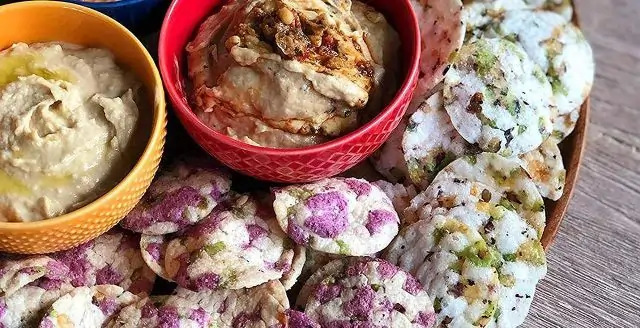
The Off The Eaten Path 4 Flavor Sampler Veggie Crisps Variety Pack is a great way to satisfy your snack cravings while still eating healthy. This pack includes four different flavors of crispy, crunchy veggie chips that are gluten-free and made with real vegetables. The Pepper flavor features a zesty blend of peppers and spices for a satisfying snack with a little kick. Each individual 1.25 oz bag is perfect for on-the-go snacking or enjoying at home.
Fresh-Prepared High-Protein Craft Salads
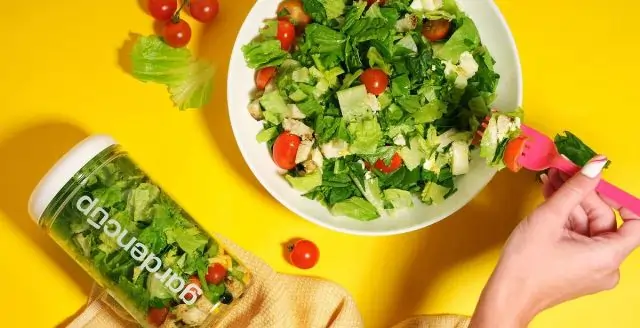
The Fresh-Prepared High-Protein Craft Salads & Grain Bowls (4-Pack) by Gardencup is a sample pack of 4 individual, ready-to-eat superfood meals that are packed with meat protein and grains. These meals come in convenient grab-and-go cups, making them perfect for those on-the-go. The salads and grain bowls are made with fresh, high-quality ingredients and are cold-shipped in airtight containers to ensure freshness upon arrival. With a variety of delicious options to choose from, this sample pack is the perfect way to try out different healthy meals that are both convenient and nutritious.
Blog Post Conclusion on Are Packaged Salads Safe To Eat
In conclusion, packaged salads can be a convenient option for those looking for a quick and easy meal. However, it’s important to be aware of their potential health risks and to take steps to ensure their safety. By reading and understanding the label, storing and preparing them properly, and considering alternative healthy options, you can enjoy salads that are not only tasty but also nutritious and safe. Making your salads at home also offers many benefits, including greater control over the ingredients and a wider variety of options. With these tips and considerations in mind, you can enjoy the benefits of salads while minimizing any potential risks.
FAQ and answers on Are Packaged Salads Safe To Eat
Are Packaged Salads Safe To Eat
It depends on the type and brand. Some can be healthy, while others may have added preservatives and high levels of sodium.
Can packaged salads cause foodborne illness?
Yes, packaged salads can cause foodborne illness if not handled and stored properly.
How can I ensure the safety of packaged salads?
Always check the expiration date, look for signs of spoilage, and store and handle them according to the label instructions.
What are some alternatives to packaged salads?
Making your salads at home with fresh ingredients or choosing other healthy meal options such as grilled vegetables or lean proteins.
